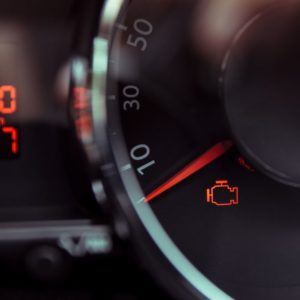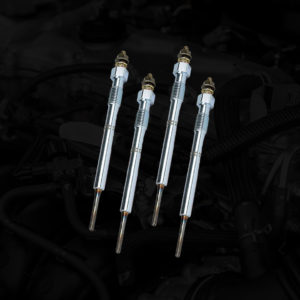Car headlights have come a long way since the 1880s. They went from fuel-burning lamps to glowing light bulbs, to exotic gas-based illumination, and then to light emitting diodes. Many modern headlights can operate in different modes, such as low beams for driving in normal night conditions and high beams to see further down the road.
The more capable headlights get, the more complex they become to operate. You would think you’d notice if the headlights are running, but what if you accidentally turned them on while driving during the day? You might also not realize that you’ve switched the lights to high beam mode.
Fortunately, a cursory glance at the headlight indicators can tell you about what mode your car’s headlights are in. These warning lights contribute to your awareness of your vehicle’s current status while driving.

What Is A Headlight Indicator?
The headlight indicator is a warning light on your car’s instrument panel. It usually bears a symbol resembling a light bulb.
There is another headlight indicator called the high beam light indicator. It features the high beam sign, an image of the headlight seen from the side with several horizontal lines lined up in a column to its side. Unlike most warning lights that go green, yellow, or red, the high beam light indicator usually shines blue.
What Does The Headlight Indicator Do?
The headlight indicator illuminates when certain vehicle lights are turned on. These lights may include the following:
These vehicle lights provide illumination during the night or in inclement weather. They help you see the road ahead of your car. At the same time, they also help other drivers see your vehicle better.
Of note is that turning on the daytime running lights will not make the headlight indicator light up. Unlike headlights and other lights, these lights get used in daylight.
The high beam light indicator will also illuminate if you switch the headlights to the high beam mode.

What Do the Headlight Indicators Mean?
Many headlights can operate in more than one lighting mode. You can change between modes using the headlight control system, which features either individual buttons, a dial, or a knob that you turn to select the appropriate setting.
Each button or selection on the headlight control system has a symbol representing the vehicle light or headlight operating mode it controls.
Parking Light/Tail Light Control
First is the parking light/tail light control. It operates the parking lights and the tail lights, which helps other drivers spot your car in the dark. This control bears a symbol of a pair of lamps that stands for the tail lights they control.
For most examples of headlight control systems, choosing this setting won’t activate the headlights. If you expect to drive during nighttime, push or click this a second time.
Headlight Control
Using this activates the headlights. The headlight indicator on the instrument panel illuminates to let you know that the lights are running and turns off when you shut down the headlights.
High Beam Control
This bears the distinct high beam sign with the headlight and wavy lines that indicate a powerful light beam.
Older cars usually have the high beam controls on the turn signal stalk. You activate the high beams by pressing the stalk forward or flash them by pulling the stalk back.
Using this control will activate the high beam indicator light. The blue color of this warning light distinguishes this bright symbol on your car from other indicators.

Is It Safe To Drive With a Headlight Indicator On?
You can drive your car safely with an illuminated headlight indicator or high beam light indicator. Unlike warning lamps like the check engine light, these indicators don’t warn about a problem. Instead, they remind you that certain vehicle lights are running or the headlights are in high beam mode.
However, do not make a habit of ignoring either indicator. The headlights keep you and other people safe on the road at night.
An illuminated high beam indicator means you have high beams on. High beams are very bright and might accidentally blind pedestrians and other drivers with the intense glare from the headlights.
Headlights also don’t operate in a vacuum. Instead, they work in conjunction with other parts. If the headlights develop an issue, the problem might spread to the systems connected to the lights.
Driving with the headlights on during the day wastes power but also wears them out faster through extended use. While LED and xenon headlights have longer lifespans that compensate for the increased wear, older halogen headlights can burn out earlier.
If the headlight or high beam light indicators activate, but the headlights don’t work like designed, there’s something wrong with your vehicle’s front lights. Get the headlights checked as early as possible to repair or replace any damaged component.
Proper Headlight Alignment
Horizontal Adjustment
To horizontally adjust your headlights, follow the steps below:
- Step 1: Check your owner’s manual and look for the adjustment screws. They’re usually located near the headlight assembly.
- Step 2: Place masking tape in a cross shape over the headlight lens to mark the center.
- Step 3: Measure the distance between the headlight centers, then mark the same measurement on the wall. Adjust the horizontal screws to align the headlight beams with the marks on the wall.
Vertical Adjustment
To vertically adjust your headlights, follow the steps below:
- Step 1: Find the vertical adjustment screw. It’s usually above or below the headlight assembly. Watch the direction the beam is moving to ensure you’re working with the vertical screw.
- Step 2: Measure the height from the ground to the center of the headlights, then transfer the measurement to the wall. Adjust the screws until the beam aligns with the marks on the wall.
- Step 3: Confirm that the headlights are angled downward to prevent blinding drivers.
Any information provided on this Website is for informational purposes only and is not intended to replace consultation with a professional mechanic. The accuracy and timeliness of the information may change from the time of publication.
































